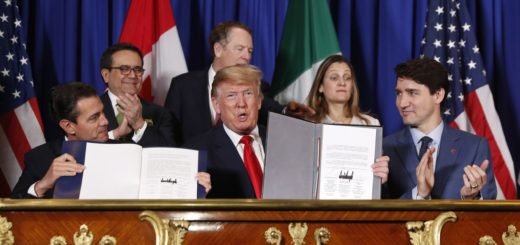What Is Canada’s Immigration Policy?
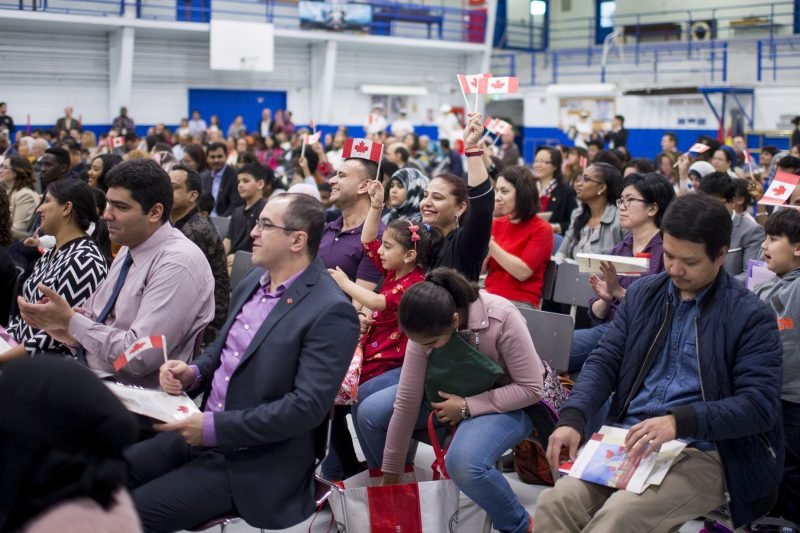
Introduction
Canada has built a reputation over the last half century of welcoming immigrants and valuing multiculturalism. Foreign-born people make up about one-fifth of Canada’s population—one of the highest ratios for industrialized Western countries. Immigrants have helped the country counter aging demographics and fuel economic growth. In recent years, Canada has become an even more attractive destination for immigrants as the United States, under the leadership of President Donald Trump, curtailed several immigration programs, including those for refugees, asylum seekers, and temporary workers. However, pandemic-related travel restrictions, coupled with President Joe Biden’s efforts to reform U.S. immigration policy and increase the annual refugee cap, could reduce the number of people seeking to immigrate to Canada.
What role has immigration played in Canada historically?
As in the United States, immigration has significantly shaped Canadian society and culture. Following its independence from the United Kingdom in 1867, Canada used immigration to help develop vast tracts of land. Government-sponsored information campaigns and recruiters encouraged immigrants of that era to settle in rural, frontier areas.
But not all immigrants were welcome. Nineteenth- and early twentieth-century policies prevented or discouraged immigration by select groups, including certain people of non-European and non-Christian backgrounds, as well as the poor, ill, and disabled. Canada’s immigration calculus changed during the postwar period as refugees and others fled Europe, public attitudes toward outsiders softened, and economic growth demanded a larger workforce. Cold War tensions also influenced Canadian policy, with preferences established for anti-Communist and Soviet-bloc immigrants.
Legislation in the 1960s and 1970s laid the groundwork for the immigration regime Canada has today, which embraces multiculturalism. In 1967, Ottawa introduced a points-based system for evaluating applicants, after which Canada saw a jump in immigration from Africa, Asia, the Caribbean, and Latin America. A 1971 policy first articulated the government’s support for cultural diversity, and legislation in 1976 explicitly codified Canada’s commitment to refugees, mandated federal and provincial officials develop immigration targets together, and cast immigration as a tool for meeting the country’s cultural, economic, and social objectives.
Immigration has long played a vital role in Canada’s economy, providing a relatively young stream of workers. Immigrants have become increasingly important as the native-born labor force ages and the fertility rate remains low, at roughly 1.5 births per woman. However, Canada continues to suffer a shortage of skilled workers despite attempts to attract this category of immigrants. Today, immigrants account for nearly one-quarter of Canadian workers.
How do Canadians view immigration?
The Canadian public has held favorable views of immigration for decades. In a 2021 poll, only about 30 percent of Canadians felt immigration levels were too high. Canadians generally view both immigrants and their country’s immigration system more positively than their counterparts in the United States. This is due in part to the Canadian government’s efforts to promote and embrace a policy of multiculturalism and make diversity part of the national identity. Canada also does not have large-scale unauthorized migration, a challenge that has fueled backlash against immigrants in many other countries, including the United States. Still, some research suggests public support for immigration could slip easily.
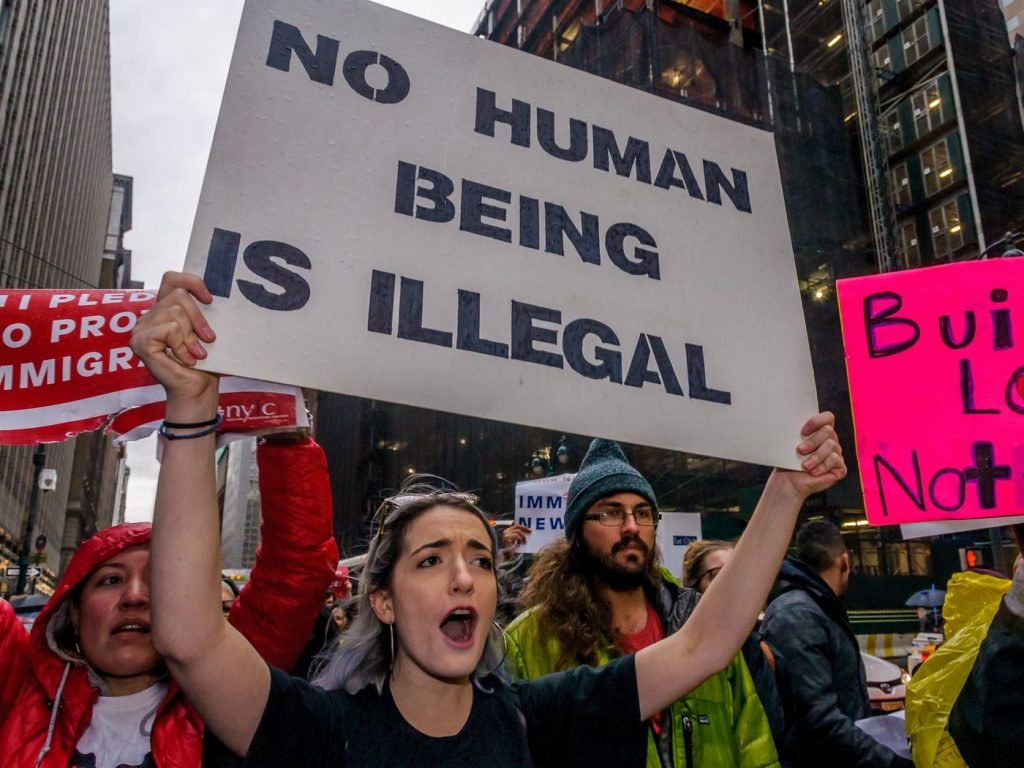
Who immigrates to Canada, and where do they settle?
Canada granted roughly 401,000 foreigners permanent residency in 2021, the highest number in more than a century. The greatest share of new Canadian permanent residents came from India, and many were skilled professionals. The Canadian government plans to welcome 411,000 new permanent residents in 2022.
Ontario has long been the leading destination for immigrants. In the first ten months of 2021, the province welcomed almost 49 percent of all new permanent residents, the majority of whom settled around Toronto, Canada’s largest city.
How does the Canadian immigration process work?
Canada admits new permanent residents under four main categories. In 2019, 58 percent of new permanent residents were admitted through the economic stream, followed by 27 percent through family sponsorship, 14 percent through protected persons and refugees, and 1 percent through humanitarian or other.
Economic. Canada’s economic immigration process has been touted as a model for other countries. The largest share of economic immigrants come through federal high-skilled worker programs. Many apply through a point system that gives preference to younger candidates with job offers and high levels of education, experience, and language proficiency (i.e., English and French). Every two weeks, the government invites top-ranking individuals to apply for permanent residency, an expensive and comprehensive process that includes language testing and biometric screening. Most applicants receive a decision within six months.
The second-largest economic immigration pathway is the Provincial Nominee Program, which accounted for one-fourth of all immigrants in 2019. Through this process—as well as similar, Quebec-specific programs—people apply to individual provinces, which choose candidates who fill their economic needs. The federal government must still approve provincially supported immigrants, but it grants most permanent residency. Canada’s provincial immigration approach has sparked interest in the United States, where regional programs could bolster growth in cities with dwindling populations.
Family. This class of immigrants includes spouses, partners, and children joining family members already living in Canada. Under this program, legal permanent residents apply to sponsor their relatives, who must also apply for permanent residency. Canada recognizes same-sex couples for this immigration category, even if they are not legally married, although a couple must provide proof of a long-standing relationship.
Protected persons and refugees. Canada overtook the United States as the world’s top refugee resettler in 2018, granting permanent residency to more than twenty-eight thousand displaced people, mostly from Africa and the Middle East. (In 2020, that total fell to a little more than nine thousand due to pandemic restrictions.) There are two main types of resettled refugees: government-assisted and privately sponsored. Government-assisted refugees are referred by the UN High Commissioner for Refugees based on their location and vulnerability, and receive government assistance during their transition. Privately sponsored refugees, who accounted for more than half of resettled refugees in 2020, are brought to Canada by government-approved citizens and organizations that assume legal and financial responsibility for them. Refugees cannot apply directly to be resettled in Canada. All undergo rigorous screening by Canadian officials and generally have permanent resident status when they arrive.

Humanitarian and other. Canada grants permanent residency to a small number of people for other reasons. These include broadly defined humanitarian and compassionate grounds, such as specific hardships that applicants would face if they were to return to their home countries. Individuals must receive permission to apply. Officials consider various factors when adjudicating cases, such as applicants’ connections to Canada and the circumstances they face if not admitted.
What is Canada’s policy on asylum seekers?
Canada is also known for its relative openness to asylum seekers. They often come to Canada for similar reasons as resettled refugees, but they differ from the latter in that they have not obtained government approval before arriving.
Migrants can make a claim at any border crossing or airport, as well as certain government offices inside Canada. In 2020, more than four thousand asylum seekers entered the country without authorization, which does not lead to criminal prosecution once they claim asylum. It can take officials up to two years to decide whether to grant an applicant protected status. Once that status is granted, most asylum seekers are immediately eligible to apply for permanent residency. In limited circumstances, some unsuccessful asylum seekers may qualify for permanent residency under the humanitarian category.
Some critics, including immigrants who have entered the country via normal channels, claim that Canada allows asylum seekers to “jump the queue” and enter through “backdoor immigration.” While officials consider their cases, asylum seekers receive health care and, potentially, housing assistance, social welfare, and work rights. Moreover, the government tends not to deport failed asylum claimants, and some remain in Canada illegally.
How do immigrants adjust to life in Canada?
Canada goes to comparatively great lengths to help immigrants assimilate by providing them with orientation programs, skills training, social services, and pathways to citizenship. In recent years, roughly three-quarters of the federal immigration agency’s budget has gone toward settlement programs. This level of support has helped make Canada one of the most sought-after destinations for immigrants, with high rates of immigrant satisfaction and naturalization. Immigrants have risen to prominent positions within Canadian society, including the prime minister’s cabinet.
Still, immigrants continue to lag behind native-born Canadians on certain economic indicators, although the disparities have diminished over time and generations. Many struggle to find employment that matches their skills and qualifications. “Immigrants do have to work incredibly hard to find their footing in the Canadian economy, especially those immigrants who lack linguistic ability,” says Daniel Hiebert, a professor at the University of British Columbia who has advised Canadian officials on immigration.
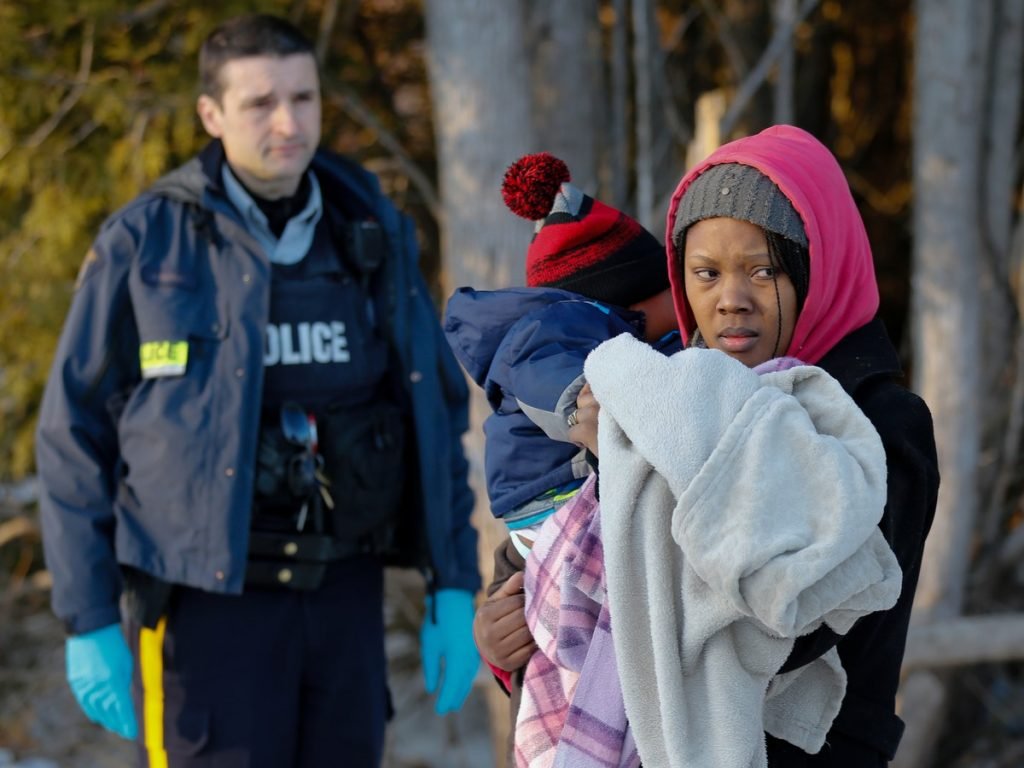
What are Canada’s temporary foreign worker programs?
Canada has several temporary foreign worker programs intended to address industry-specific needs and support the country’s economic and cultural advancement. Officials granted roughly 404,000 temporary work permits to foreigners in 2019, including agricultural laborers, in-home caregivers, and highly skilled professionals.
The system is complex, but temporary workers generally come to Canada through one of two pathways. The International Mobility Program provides work visas to foreigners that fit broad criteria. Employers can hire them without considering Canadian applicants, though some permit holders have restrictions on where and what jobs they can work. Meanwhile, the Temporary Foreign Worker Program (TFWP) allows businesses that cannot find employees domestically to recruit internationally. All foreign workers receive labor protections, and officials inspect their workplaces to mitigate mistreatment. Still, abuse and corruption are common in Canada’s temporary worker system, facilitated by insufficient government oversight and work permits that tie immigrants to a single employer; and these problems have gotten worse amid the COVID-19 pandemic. How long foreign workers can remain in Canada varies. While some skilled temporary workers eventually gain permanent residency, low-wage laborers generally cannot.
How much of a challenge is illegal immigration in Canada?
Canada’s geography—bordered by three oceans and the United States, which is itself a magnet for immigrants—has helped Ottawa limit flows of undocumented people. Its highly regulated immigration system, including some of the world’s strictest visitor-visa requirements, is designed to further curb this phenomenon. Experts estimate there are more than two hundred thousand undocumented people living in Canada.
More than half of Canadians felt that their country was too welcoming to immigrants, according to a 2018 Ipsos poll, which also found that Canadians were worried about job prospects due to migration. Deportations in 2020 were the highest in five years, at more than twelve thousand people. Nonetheless, several Canadian cities have sanctuary-city and “access without fear” policies that limit police cooperation with immigration authorities and guarantee undocumented people public services. Officials also rarely enforce a law banning Canadian companies from hiring undocumented workers.
How have U.S. policies affected Canada’s immigration system?
The United States and Canada have long collaborated to control the movement of people and goods across their shared, mostly unguarded border—the longest in the world at more than five thousand miles.
In 2011, the governments announced a “Beyond the Border” strategy to enhance security cooperation and promote lawful travel and trade. Under the plan, the two countries began sharing information about visa applicants and border crossers. More broadly, the bilateral framework has since fostered a healthy working relationship between Canada and the United States, which some analysts say is likely to last for years to come. “The Beyond the Border agreement and all of the subsequent actions under it have institutionalized a level of Canada-U.S. border cooperation that is deep enough…to survive changes in political leadership in both countries,” says Theresa Cardinal Brown, an immigration expert at the Bipartisan Policy Center.
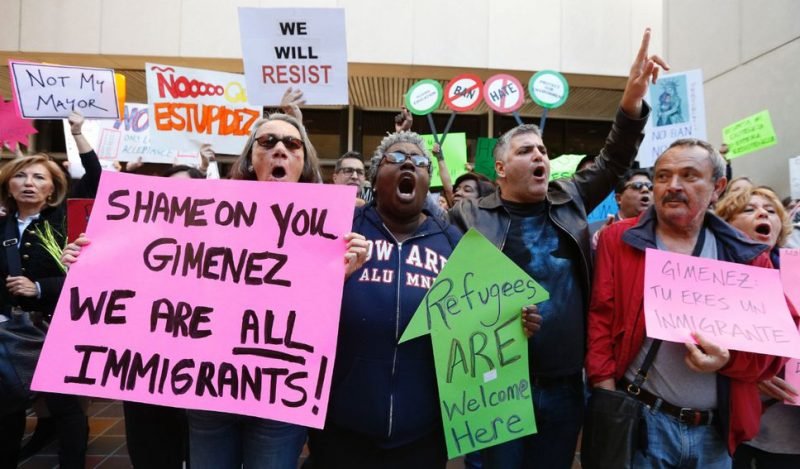
The Trump administration’s immigration actions placed strains on Canada’s system. In 2017, when Trump took office, Canada received roughly fifty thousand asylum claims, double the previous year’s. Experts linked this to a number of Trump policies, including asylum and travel restrictions, heightened immigration enforcement, and the decision not to renew Haitians’ temporary protected status (TPS). The surge overwhelmed Canadian authorities, prompting officials to tighten border security, modify the asylum screening process, and even visit the United States to deter would-be migrants.
Still, the immigration pressures continue. In 2020, a Canadian court ruled that a U.S.-Canada agreement that manages refugee claimants at the border was unconstitutional. Human rights organizations similarly argued that it endangered asylum seekers. However, the ruling was overturned in April 2021, and the deal is still in force.
Yet, some of Trump’s immigration actions were a boon for Canada’s economy. For example, in June 2020, his administration suspended the issuing of visas for highly skilled workers. Meanwhile, Canada made it easier for foreign workers to acquire jobs on its territory, giving qualified professionals—many applying from the United States—work permits within two weeks. This has led some U.S. companies to expand their presence in Canada.
Since taking office, Biden has reversed many of Trump’s immigration policies, such as the freeze on green cards enacted in late 2020. His administration has also reinstated TPS for Haitians and extended benefits to nine other countries, as well as raised the annual refugee admissions cap to 62,500 for fiscal year 2021. Biden’s changes to U.S. immigration policy have led some officials to worry that Canada will lose its competitive edge.
How has the COVID-19 pandemic affected immigration?
Throughout the pandemic, the Canadian government, like many around the world, has imposed travel and immigration restrictions. In March 2020, Ottawa blocked most foreign travel, including nonessential transit of the Canada-U.S. border, and turned away asylum seekers. In November 2021, asylum seekers were again allowed entry, but remaining travel restrictions, including vaccination requirements, still make it difficult for certain immigrants to enter the country.
The pandemic has also spurred some reforms. Canada’s Express Entry program, which facilitates the acceptance of skilled workers based on a points system, now accepts migrants who receive a minimum score of seventy-five, rather than the previous four hundred. And in May 2021, the Canadian government created a new temporary pathway to permanent residency for nearly ninety thousand people living in Canada with a temporary status, including international graduates and health-care and other essential workers.





